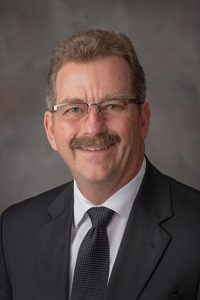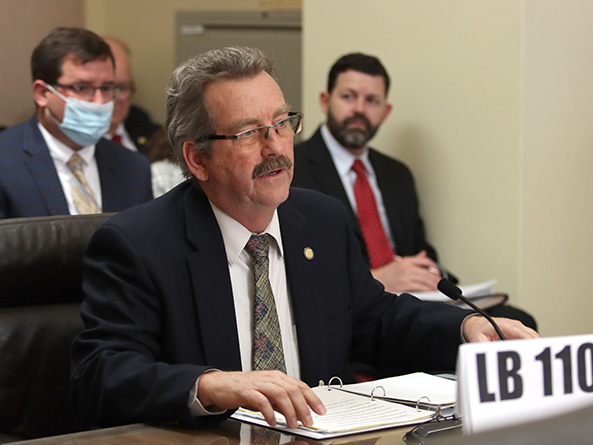Nuclear reactor feasibility study proposed
Nebraska would use pandemic relief funds to conduct a feasibility study on siting options for nuclear reactors under a bill considered Feb. 16 by the Appropriations Committee.

LB1100, introduced by Brainard Sen. Bruce Bostelman, would appropriate $1 million of the American Rescue Plan Act funds allocated to Nebraska to the state Department of Economic Development for use by a political subdivision that owns or operates a nuclear plant in the state to conduct a feasibility study.
The study would assess siting options for new, advanced nuclear reactors throughout Nebraska and existing electric generation facilities based on key compatibility assets for such reactors.
Bostelman said ARPA funds can be used to mitigate the economic impacts of COVID-19 on low-income communities. One such impact was the lack of resiliency in the state’s energy grid exposed by last February’s extreme cold weather event that led to rolling power outages and interrupted health care provision, drinking water purification and employment, he said.
“These communities were already dealing with COVID-19 effects,” Bostelman said, “and then on top of [that], their employers were shut down as a result of electrical power outages throughout the state.”
The event also impacted agriculture through loss of animals and the temporary shutdown of processing facilities due to the severe weather that added stress to already strained food supply chains, Bostelman said. All of which points to a need for a “weather-resilient, green” source of power for businesses, homes and the medical industry, he said.
Daniel Buman, director of nuclear oversight and strategic asset management at Nebraska Public Power District, testified in support of the proposal on behalf of NPPD and the Nebraska Power Association, which represents all of Nebraska’s public power utilities.
Calling a siting study the “next logical step” for meeting the state’s energy needs, he said a new generation of nuclear facilities could provide reliable, baseload carbon-free energy for the state. Cooper Nuclear Station currently provides approximately 65 percent of the electricity for Nebraska customers over a rolling two-year average, he said.
“Siting studies are needed to identify the best combination of features and locations to maximize the value [of new nuclear sites] for Nebraska,” Buman said.
Also testifying in support was Jacob Meysenburg, a student in Southeast Community College’s energy generation operations program.
Cooper Nuclear Station functioned during the entire severe weather event last year, he said, demonstrating the resilience of nuclear energy. The state’s coal plants are aging, Meysenburg said, providing an opportunity to expand the state’s nuclear capacity.
“Nuclear is a safe, clean technology,” he said. “It’s powered Nebraska for decades.”
No one testified in opposition and the committee took no immediate action on LB1100.


